Dynamics 101 – Microsoft Dynamics Overview
You are here: >Dynamics 101 – Microsoft Dynamics Overview
Introduction
Welcome to Microsoft Dynamics Overview. Dynamics is the most complete business software solution available today and this blog will demonstrate why and how it can help your company.
This first post in our Dynamics 101 blog series will introduce you to Dynamics, including the software foundation, terminology, where Dynamics is headed, and some simple tricks to get you started. We will explain the different Dynamics solutions in the Microsoft Dynamics stack which follow:
- Dynamics AX
- Dynamics CRM
- Dynamics SL
- Dynamics GP
- Dynamics NAV
In addition, we will summarize Microsoft’s latest offering, Dynamics 365.
Enterprise Resource planning (ERP)
The foundation concept to understand is that the Microsoft Dynamics toolset is known as ERP (Enterprise Resource Planning) software. ERP is a team of applications which manages key aspects of a business or enterprise. It covers planning, development, sales, purchasing and marketing. There are numerous additional ERP’s in the marketplace including JD Edwards, Epicor, SAP and Oracle. Lastly, within the dynamics toolset, but outside of the strict ERP definition, is Dynamics CRM, Microsoft’s Customer Relationship Management software.
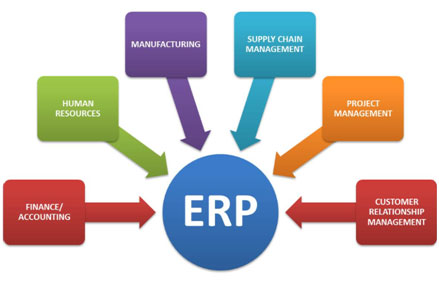
Figure 1 – Illustration of the different business disciplines Microsoft Dynamics Overview ERP is designed to manage.
Microsoft Dynamics AX
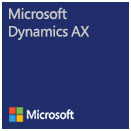
History
Microsoft Dynamics AX begin life as Axapta and was released by Damgaard Data in March 1998. In 2002 it was acquired by Microsoft will the goal of providing a complete ERP solution to medium and large businesses.
What types of businesses?
Dynamics AX is a functionally rich ERP package. It caters to a number of market sectors including government, retail, manufacturing, distribution and the services industries. Dynamics AX thrives in various manufacturing environments such as discrete, project, process, and lean. It is also very strong in distribution with its new warehouse management solution. It is also strong in the services industries demonstrating strong foundations in finance, human resources, and project accounting.
Summary of AX functions
Dynamics AX has heavy integration with Microsoft Office and Dynamics CRM. Easy multi-company, multi-currency, multi-language and regional finance functions make Dynamics AX a global solution. AX is designed for large organizations and has a typical implementation time of six months or more, depending on the complexity. Dynamics AX does not have the market share of some of its major competitors (SAP and Oracle); however, it is widely accepted to be quicker to implement, has overall better user adoption, and a lower total cost of ownership. A screenshot of Dynamics AX All customers form illustrates the look and feel of Dynamics AX. You will notice it feels like you are working in Microsoft Office, a big advantage for overall ease of use.
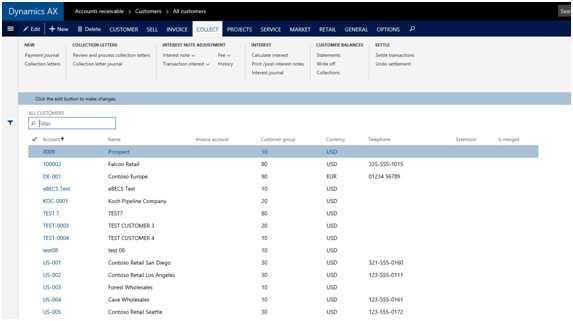
Figure 2 – Screen print from AX 7.
Market placement of Dynamics AX
The main releases of AX have been 4.0, AX 2009, AX 2012 and AX7 which was released in February 2016. Dynamics AX has been implemented in a broad spectrum of businesses and has a healthy partner network well versed in a number of specialized markets. However, as with any ERP implementation, choosing the right implementation partner can prove difficult. A number of market-specific applications have also been developed that integrate with AX to resolve industry sector specific challenges. Free Microsoft tools like Life Cycle Services help manage and expand the use of AX as well. In 2015, Gartner, a leading research company, defined Dynamics AX as a Visionary in the ERP Magic Quadrant analysis as seen in Figure 3.
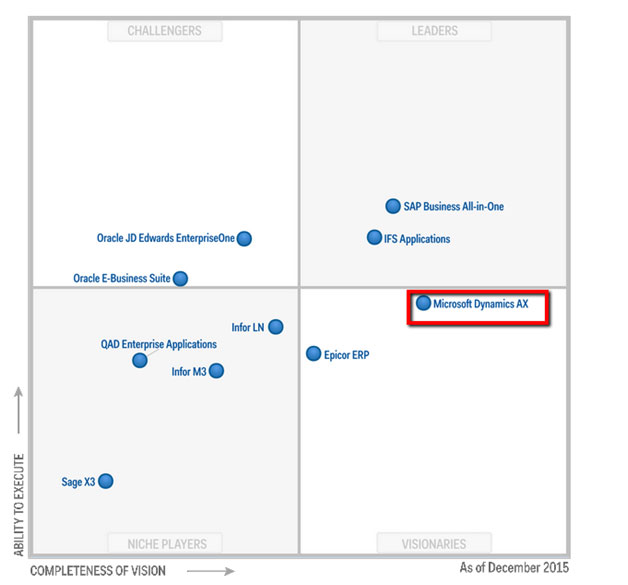
Figure 3 – Gartner’s Magic Quadrant 2015 for Single Instance ERP for Product Centric Midmarket businesses
Microsoft Dynamics CRM
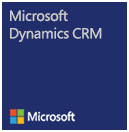
Functionality of Microsoft Dynamics CRM
Microsoft CRM is designed to work in concert with the Dynamics ERP offerings. Dynamics CRM has the ability to manage numerous aspects of the customer relationship, coordinating marketing activities, managing customer requests, orchestrating on-site support, and managing project services for example. These functions help clients strengthen the customer bond. Dynamics CRM also comes with a robust workflow engine, which allows many standard sales processes to be automated, and to interact with other Microsoft products, like SharePoint. Figure 4 illustrates the look and feel of Dynamics CRM from the Sales Activity Dashboard. Dynamics CRM is where Microsoft first launched the updated look-and-feel that Dynamics AX now uses. Dynamics CRM is also fully mobile, and works on all major smartphone platforms.
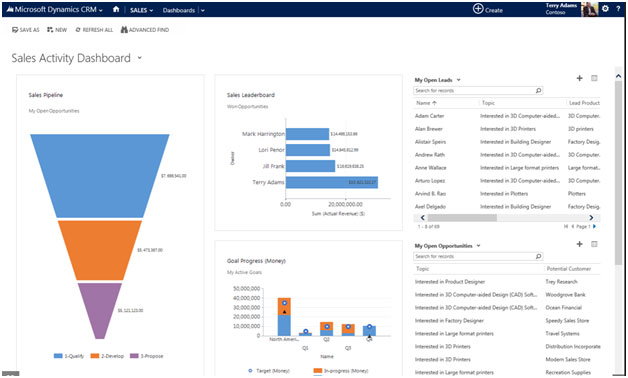
Figure 4 – Dynamics CRM screenshot
History of Dynamics CRM
Developed internally by Microsoft, Dynamics CRM was introduced in 2003 with the popular online edition being released in 2008. Dynamics CRM exists in a robust marketplace with competitors like SalesForce. It is attractive to customers who desire to leverage the embedded Microsoft Office tools and strong ERP integration while being very affordable. Dynamics CRM also can be integrated into an array of other ERP engines. The timeframe to implement Dynamics CRM is short compared to ERP’s, and CRM works well with rapid release planning (such as Agile). In the recently published Magic Quadrant for Salesforce automation, Dynamics CRM was categorized as a leader by Gartner (Figure 5).
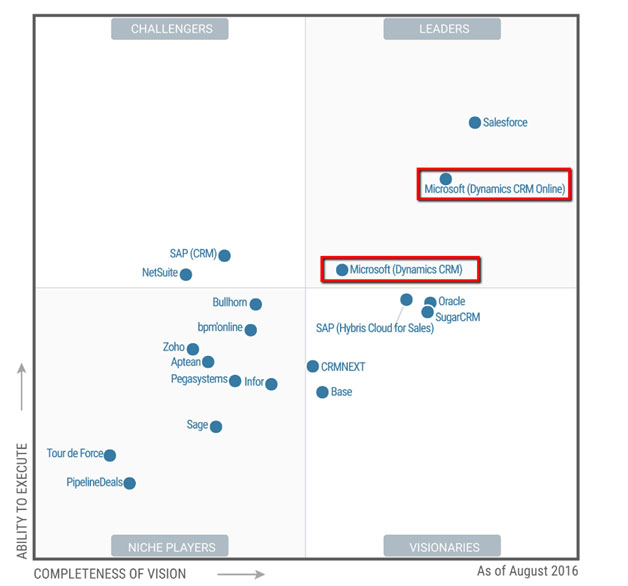
Figure 5 – Gartner’s Magic quadrant for Salesforce automation rates Dynamics CRM as a leader in the market place.
Microsoft Dynamics NAV
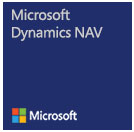
History
Dynamics NAV, initially Navision, debuted in 1984 and merged with Damgaard in 2000. Microsoft bought Navision in 2002 (along with Dynamics AX) and badged the software Dynamics NAV. The software is marketed to small and medium-sized businesses. These businesses tend to have revenue starting at $10 million. Dynamics NAV is noted to be functionally well equipped considering its price.
Implementation
Dynamics NAV receives high marks on its ease of use and re-configurable user interface (Figure 6). Because of the ability to customize, Dynamics NAV is a great fit for mid-market, niche businesses. However, this can mean that NAV takes longer and is costlier to implement than Dynamics GP. The average implementation timeframe for Dynamics NAV is four to six months depending on complexity. RapidStart can be leveraged to aid a rapid implementation. We show a screenshot of Dynamics NAV in figure 6 to demonstrate its look.
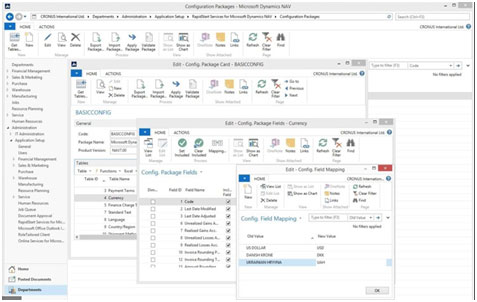
Figure 6 – Dynamics NAV screenshot
Dynamics GP
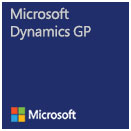
History and implementations
Formerly Great Plains, Dynamics GP is extremely popular within North America. The solution was released in 1993 by Great Plains, then acquired by Microsoft in 2001. The solution is targeted to small and mid-sized businesses and is renowned for its strong financial management. It offers proven functionality but lacks variety and configurability (Screen shot Figure 7). This may lead to more customizations and modifications than Dynamics NAV. Dynamics GP is ideal for small and medium sized businesses that require a financial package only and do not require additional modules such as inventory, production, etc. The average implementation timeframe for Dynamics GP is three to six months costing, depending on complexity.
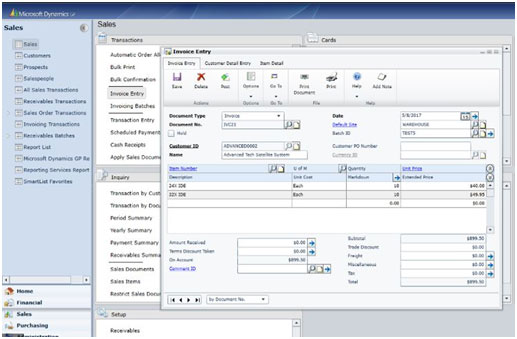
Figure 7 – Dynamics GP screen shot
Microsoft Dynamics SL
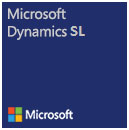
History
In 1980, Solomon Software was released by TLB, Inc. to provide accounting solutions for early personal computers. After a release for IBM PC the software became popular in the 1980s. It was acquired by Great Plains Software in 2000 and brought under the Microsoft umbrella in 2001. Microsoft later marketed the product as Microsoft Dynamics SL.
Implementations
Dynamics SL is a project based ERP solution which enables businesses to collaborate in the finance, project accounting, manufacturing, supply chain and field services areas (Screen shot Figure 8). The solution is aimed at small to medium sized businesses. The cost and timeline for implementing Dynamics SL is lower than the rest of the Dynamics family. Dynamics SL has a loyal user base but new implementations are becoming scarce.
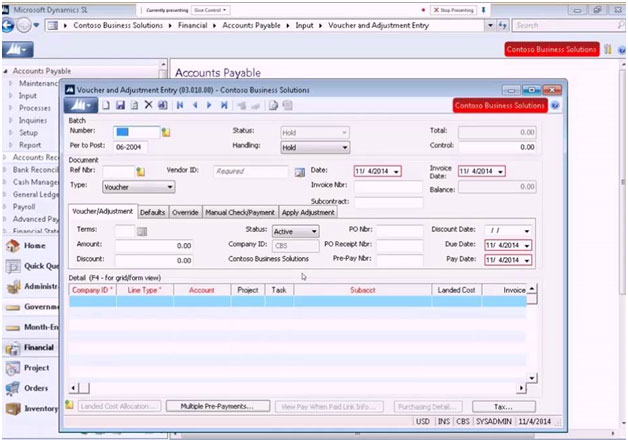
Figure 8- Dynamics SL screen shot
Microsoft Dynamics Overview For 365
The future
Microsoft Dynamics 365 Enterprise edition will be released in November 2016. Although not a new release, Dynamics 365 Enterprise is a blend of the strengths of Dynamics AX and Dynamics CRM with the utility of PowerApps to create a compelling offering to medium and large sized businesses. Dynamics AX will be referred to as Operations in this structure (see figure 9 for the full structure of Dynamics 365). Dynamics 365 in due time will provide seamless integration between Operations, CRM and the Office tools through the common data model. In the ideal future state, a client will be able to create, send and update a sales quotation from within Outlook with the CRM and ERP functions being completed in the background. The packaging concept is modelled from the popular Microsoft Office 365 which provides a cloud offering for the Office tools.
The vision is for Microsoft to continue offering robust software to businesses while sharing the information gathered by the organization to all team members.
These are very exciting times ahead.
To obtain a demo of Dynamics AX, Dynamics CRM, Dynamics NAV or Dynamics 365, please click on the link below.
- About Us
- Partners
- Careers
- Contact us
- eBECS and the Microsoft Core Data Platform
- Microsoft Dynamics NAV in Property Management
- Microsoft Dynamics Nav Manufacturing Solutions
- Microsoft Dynamics NAV Cloud pricing
- Drive your Azure Momentum with SQL Managed Instance
- Compare Microsoft Dynamics AX VS NAV
- Microsoft Azure Data Centre Migration Guide
- Microsoft Dynamics 365 Business Central or 365 for Finance & Operations?
- Introduction to Microsoft Dynamics 365 for Finance and Operations
- Microsoft Dynamics 365 Business Central or 365 for Finance & Operations? Thank You
- Microsoft Dynamics 365 Business Central or Dynamics 365 Finance
- Compare Microsoft ERP Solutions
- Compare Microsoft ERP Solutions, Dynamics NAV vs Dynamics 365 Business Central
- Microsoft Dynamics 365 Business Central Price
- Compare Microsoft ERP
Categories
- AI (3)
- Azure (2)
- Business Insights (1)
- Canvas Apps (1)
- Common Data Service (2)
- Crisis Communication (1)
- CRM (3)
- Customer Data Platform (1)
- Customer Insights (1)
- Data Analytics/BI (29)
- Data Management (1)
- Data Warehouse (1)
- Dynamics 365 (33)
- Dynamics 365 Finance (1)
- Dynamics 365 Sales Insights (1)
- Dynamics 365 Supply Chain Management (1)
- Dynamics AX (50)
- Dynamics CRM (22)
- Dynamics Field Service (10)
- Dynamics NAV (10)
- Dynamics Project Service Automation (PSA) (15)
- eBECS (4)
- eBECS Marketing (1)
- eBECS Policies (1)
- ERP (2)
- Internet of Things (IoT) (15)
- Master Planning AX (4)
- Microsoft 365 (1)
- Microsoft Lifecycle Services (4)
- Power Apps (4)
- Power Automate (3)
- Power BI (1)
- Power Platform (6)
- Power VIrtual Agent (1)
- PowerApps (2)
- Project Service Automation (2)
- Quality Management (1)
- Sales (1)
- Surface Hub (3)
- Top Tips (1)
News
Upcoming Events - Register Now
Join our list
eBECS will invite you to webinars, events and keep you up to date with relevant news. You can unsubscribe at any time.









